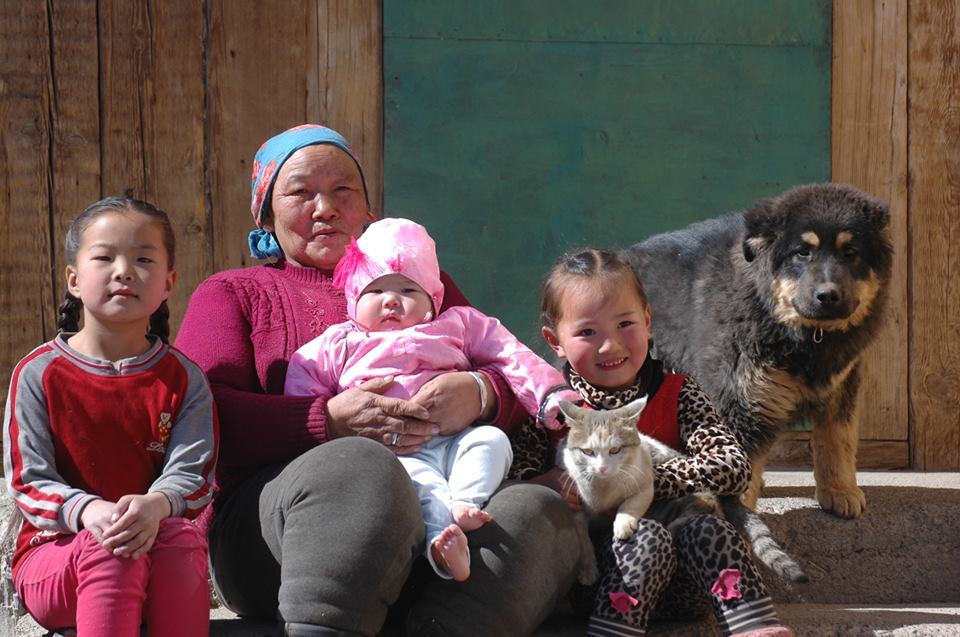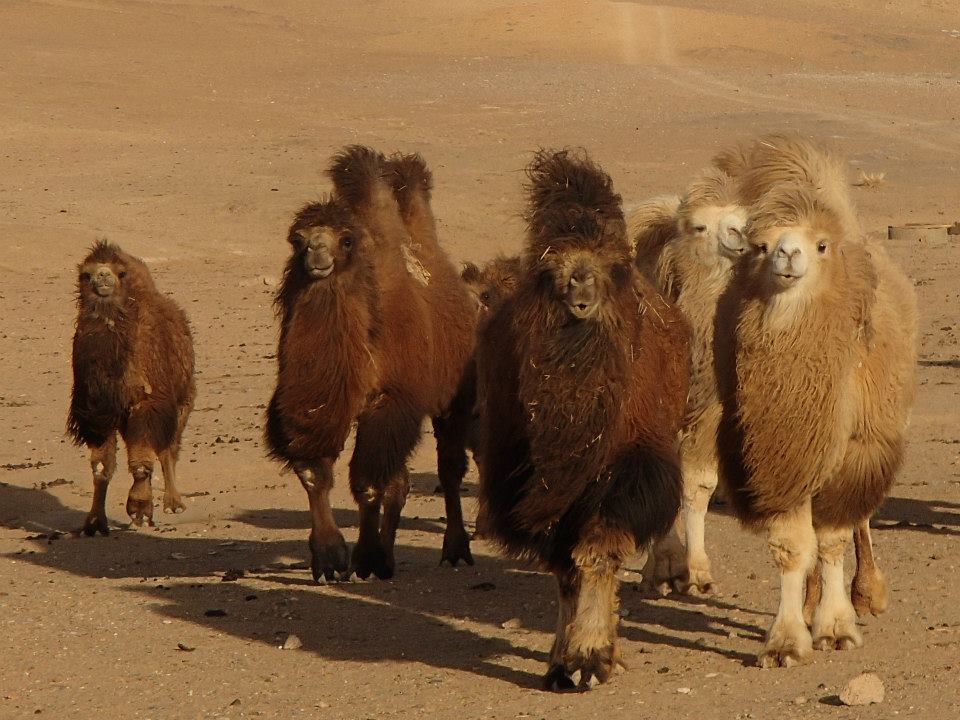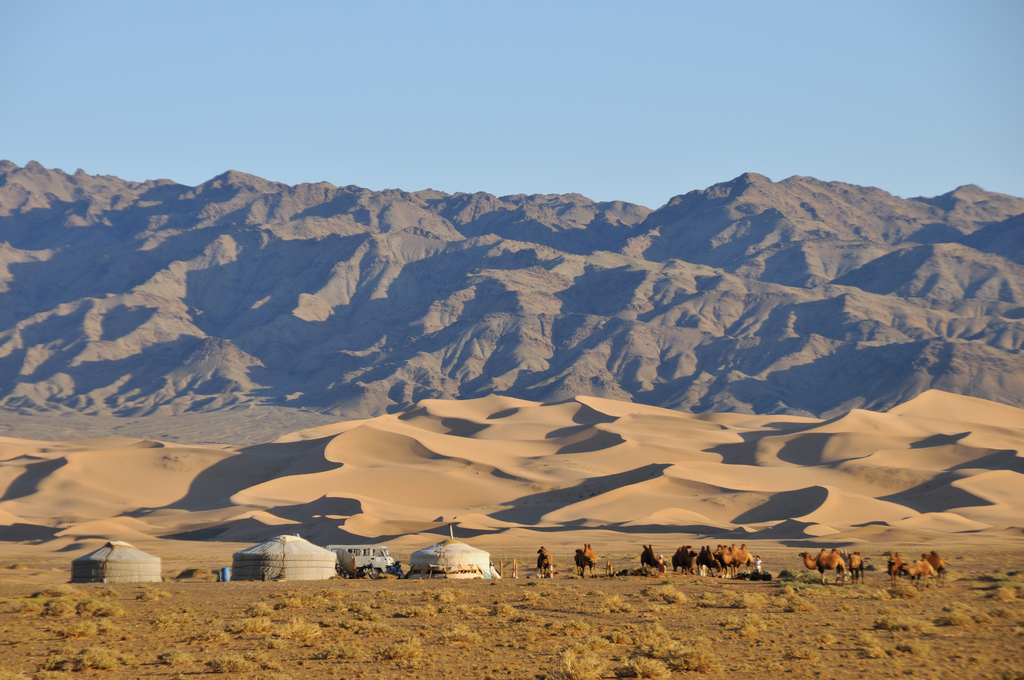HONGORYN ELS TO BAYANGOBI VILLAGE
Waking up to the splendor of the Gobi this morning we can feel a little closer to the herding families we have been meeting. We are in the land of the Bactrian camel, the two-humped variety that seems like such a different animal from it’s Saharan cousin — and many familis here keep camels in addition to their sheep and other animals.
Today we are driving the edge between the steppe and the desert, meeting with more herders and also looking out for any families with Bankhar who might be willing to work with the project or allow the use of their dogs in the breeding program. The strength and tenacity of a people struggling to maintain their way of life with dignity in the face of so much pressure — from the economy and the environment — is inspirational, and we are learning much more than just the results of our survey data. Seeing the impact a single dog can make on a family’s livelihood is eye-opening.
A family that had two adult Bankhar mix dogs prior to getting involved with the MBDP reports on an 11-month old female pup they were given by the project this year. She has made great progress bonding with the sheep and honing her instinct to protect her charges. Since she joined the family, they have not lost a single sheep or goat.
This herder has been very careful to follow the project protocol and is an excellent candidate for becoming a local breeder/trainer who can eventually help the program extend in his community.

THE MBDP field team spends a lot of time talking to the herders gathering information about their needs and concerns. Wolves are the biggest threat, and in some areas of the country snow leopards are a problem too, but lately it seems that theft is becoming an issue almost on par with loss to predators in some areas.
Herders also speak about the impact of the weather on their livelihoods. A result of climate change, severe winters with heavy snow, very low temperature, or heavy ice accumulation, known as “dzuds,” have become more frequent. There are four different types of dzud: “Gan dzud,” when pasture is ice-covered; “Khar dzud,” when there is no snow at all and the grass is destroyed by the fierce windy cold; “Tsgaan dzud,” too much snow; and “Tuuvian dzud,” when pasture is trampled by overgrazing. Animals cannot find enough grass to eat in these conditions and dzuds have been known to kill tens of millions of livestock. In 2010 over 20% of all livestock in Mongolia was lost. In some cases, herders have been left without a single animal, forcing them to migrate to urban areas or to depend on distant family for support.
We make our way north-west into Bayankhongor province heading towards the Ikh Bogd Mountain past extinct volcanos to the village of Bayangobi where we can refuel and overnight in a ger camp.

[Photos courtesy Mongolian Bankhar Dog Project/OEX]


You must be logged in to post a comment.